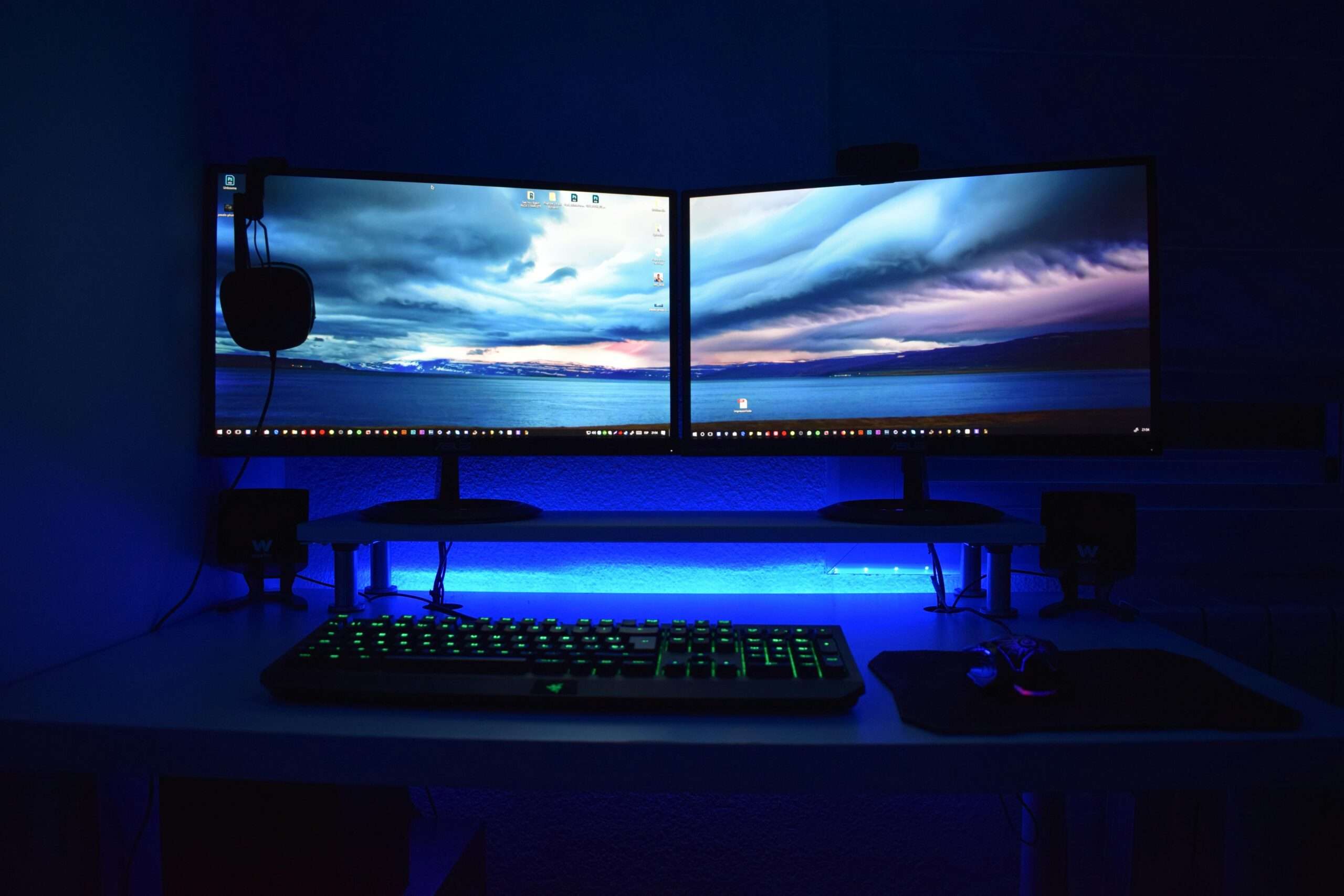Dual monitors and ultrawide monitors are among the biggest decisions you make when setting up your workplace. Both ports have their advantages and disadvantages followed by determining what you need, how you like it done, and what type of work you do. This guide will help you understand the main differences to make an informed choice.
What are the advantages of using dual monitors?
What are the disadvantages of dual monitors?
How do dual monitors compare to ultrawide monitors in terms of multitasking?
What is an ultrawide monitor and how does it differ from a standard monitor?
What are the benefits of using an ultrawide monitor?
What are the drawbacks of using an ultrawide monitor?
Which type of monitor setup is better for remote work and screen sharing?
How does the bezel between dual monitors affect productivity?
Is an ultrawide monitor more suitable for video editing and design?
Which monitor setup is better for gamers?
Advantages of Dual Monitors:
- Multitasking: You can easily work on multiple tasks simultaneously. For instance, you could browse online while a document is open on another screen.
- Ideal Screen Sharing: Perfect for remote jobs where one can share one’s screen with colleagues while maintaining the privacy of the other
- Cost-effective: It’s an affordable way to expand your workspace if you already have one monitor on your desk.
Disadvantages of Dual Displays:
- Bezel Interference: The bezel (frame) between the two monitors can be distracting when one is working while trying to use the same program across both screens.
- Messy: Dual monitors mean more cables, more power outlets, and more desk space taken up by monitor stands. It makes my work area feel cluttered.
- Limited Single Program Use: If you need to use a particular program that needs a wider screen (like an online video or large spreadsheets), it can be not easy to work across both screens because of their bezels efficiently.
What is an Ultrawide Monitor?
An ultrawide monitor is a single display that has wider dimensions than the standard one. Its 21:9 aspect ratio as opposed to the 16:9 standard ratio offers an immersive and continuous view.
Advantages of Ultrawide Displays:
- Immersive Experience: The absence of bezels offers a smooth, wide-screen display that is perfect for creative tasks such as video editing and design, among others.
- Less untidiness: Fewer cables and stands give rise to less cluttering, which means that they have tidier and more organized workplaces.
- Flexible Workspaces: You can split the screen into many different windows thereby employing it as if it were two screens without any interruption from borders. This is ideal for jobs that require a large monitor.
Disadvantages of Ultrawide Monitors:
- Limited Multitasking: Full-screen applications take over the entire display so at times it becomes difficult to work on other tasks simultaneously. For example, you can’t easily view another window if you’re watching a video full screen.
- Screen Sharing Challenges: With ultrawide resolution, sharing your screen in remote meetings can be tricky because it may not appear correctly on others’ devices thereby causing distortion or making it small.
- Higher Demands on Hardware: Computers are put under strain by ultrawide monitors as they have many pixels that need to be rendered especially during gaming and when using resource-hogging software.
In Conclusion, When Choosing Between Dual Monitors And Ultrawide Monitors, You Must Consider Their Usability
Usability
Productivity: Dual Monitors make more sense if you have several things going on at once with their separate locations on both displays. On the other hand, Ultrawide Monitors For a single continuous task that takes lots of display area is wonderful, but this could limit multitasking as compared to dual monitors.
Working Space Aesthetics And Management: Dual Monitors can create a messy desktop area due to needing more wires, poles, and sockets. Ultrawide Monitors provide a more organized aesthetic with minimal cables and no stands for your big screen.
Who Should Opt for Dual Monitors?
- Multitaskers: In case your job involves operating several programs at once like video conferencing and taking notes or running complex software presentations this kills it as dual displays are ideal.
- Remote Employees: For individuals who frequently need to share screens dual monitors provide much more versatility.
- Budget-Conscious Buyers: If you currently own one monitor then attaching an extra one is a cheap means of upgrading your setup.
Who Should Choose an Ultrawide Monitor?
- Creatives: Designers, video editors as well as software programmers require extremely broad spaces continuously thus the immersive experience provided by ultrawide displays would best suit them.
- Minimalistic Lovers: For those who appreciate clean and tidy workplaces, it is recommended that they use ultrawide monitors.
- Gamers: A seamless display is what makes gaming awesome according to many but it also depends on the hardware knowing that not every computer can support this.
Conclusion
Whether you choose to go with dual screens or an ultrawide will usually rely on your particular preferences and how you work. Multitasking and remote work are best suited for multiple displays because they offer great flexibility and ease of use, while ultrawide monitors are intended for those with an artistic flair who want to keep things simple but include an immersive feel.






